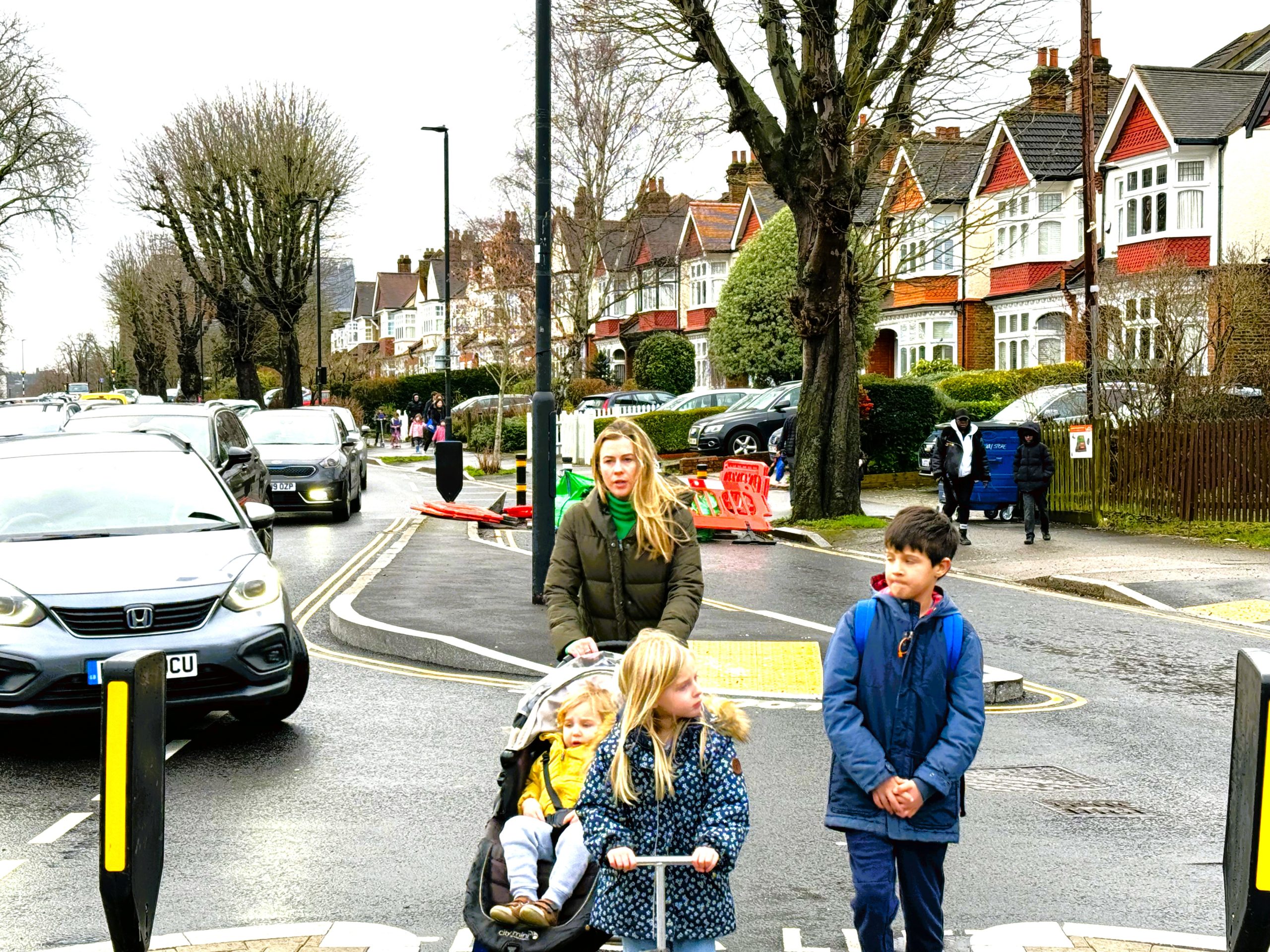A quarter of pupils in London (25%) are driven to primary school every weekday in the capital , causing a major spike in congestion and air pollution during term time. This equates to an extra 240,000 car trips on the roads during each of the morning and afternoon rush hours.
The figures have been modelled by parent campaigners ‘Solve the School Run’ , a new organisation calling for more cargo-bike friendly measures to be introduced as well as a fleet of US-style school buses to be introduced to tackle the issue.
240,000 pupils in London are estimated to travel more than a mile to their primary school, and for this group the driving rate increases to nearly two thirds (65%).
Nicola Pastore, a parent who lives in Lambeth and co-founded Solve the School Run says, “Every morning and afternoon I run the gauntlet of double-parked cars, congestion on crossings, idling and road rage, to walk my three young children to school. It’s the most dangerous part of our day. With so many families travelling more than a mile to school, they need more help to get to school in a way that is healthy, less stressful and doesn’t damage our local environment. That could include electric cargo bikes or staffed walking buses and cycle groups. Imagine if our big cities had yellow buses, like in the US, which remove the need for every parent to go on the journey every day. We need change.”
Inner vs Outer London
Surprisingly, the issue is just as bad in inner London than outer London, with a very similar proportion of children being driven to primary school (25%) in inner London boroughs, compared to 24% in outer London boroughs. The model estimates the distances that pupils are travelling to primary schools in Inner and Outer London, is almost the same, despite large differences in housing density.
Kensington and Chelsea has one of the highest modelled rates of primary-aged pupils being driven to school in London, with more than a third of pupils (36%) being taken in a car to drop off and pick up. This is largely because pupils in the borough tend to travel longer distances to school and attend ‘non-catchment’ primary schools which can select from pupils beyond their local area.
By comparison, half the proportion of primary pupils in Waltham Forest (18%) are driven to school, reflecting the fact that more than eight in ten pupils (82%) go to a school which is less than a mile to travel to from where they live.
Camden also has one of the highest modelled driving rates with 29% of primary pupils being driven to school. This is primarily because Camden has a high proportion of ‘non-catchment’ primary schools where pupils are selected from beyond their local area and have longer and more time-consuming school run journeys.
Alessandra Giuliani, a parent from Hampstead, said: “I am a mother of three and have been doing the school run in Hampstead for over 10 years. During the school run our areas is packed with cars, stuck in traffic and parked in dangerous places to drop off and pick up children. The number of near misses I have seen is staggering. And my children regularly comment on how bad the air smells.
This database is so interesting because it suggests that a significant number of primary kids in Hampstead wards are travelling over a mile to school. So if we can encourage travel choices like cargo bikes that carry kids and improve the frequency of public buses, those could become quick and sustainable alternatives to driving.”
Increase in driving to school
According to official Department of Transport figures , the number of children (aged 5-16) being driven to school in London? has increased in the last five years, despite Government targets to increase active travel.
In 2017, 19% of pupils were taken by car or van to primary school, which had increased to 24% by 2022, the most recent year in which official figures were recorded.
Yellow Buses for London?
The parents are calling for more publicly funded support for the school run. This could be in the form of funded & staffed walking groups or cycling groups, or funded school buses – more commonly used in countries such as the US, Germany, Spain and Norway.
In England, children only get funding for school transport if they are under 8 and the school is more than 2 miles away, or if they are 8 or over and the school is more than 3 miles away.
However, in the US yellow school buses are available for anyone that lives more than 1 mile from their school . In some major cities such as New York, support is available if you live just half a mile away from school.
In the USA, over half of children go to school on a school bus, compared with just 6 percent of pupils in the UK. In the US free bussing is, with a few exceptions, available to all pupils who live over one mile from school.
Other potential options that the government should consider supporting include:
- Official ‘Walking buses’ or ‘Bike buses’ with staffed marshals walking or cycling pupils from “stops” to school, taking responsibility for the pupils & registering their safe arrival at school, akin to a school bus service.
- Subsidised electric cargo bikes so parents can take their children longer distances and beat the traffic
According to a report from the Sutton Trust, the school run leads directly to as many as 40 deaths and 900 serious injuries a year, and contributes over two million extra tonnes of harmful carbon dioxide annually to the atmosphere.





